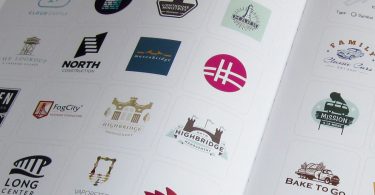I can’t count the number of times a client has come to me, told me their business name, given me a quick description of what they do, and then asked me to design a their logo.
When this happens, it feels like I’m throwing a dinner party and one of the guests has invited someone I don’t know (maybe a new love interest or an out-of-town guest). They’ve told me the guest’s name, but nothing about their personality, food preferences, or even what they prefer to drink. So I’m left guessing—and hoping—that the guest likes pork, drinks red wine, and doesn’t mind if our frisky puppy jumps on them a bit when they walk in the door.
I’ve made these decisions about the dinner based on my preferences and personality and various assumptions but not on facts or information that I really should have about the guest. On the other hand, if I know in advance that the guest can’t eat pork and that the sulfites in red wine gives them migraines, I can be prepared instead of having a hungry and disappointed guest.
If someone asks me to design a logo based on a tiny bit of information, then I have to make just as many assumptions about the personality of the business, its customers, and the owner’s personal taste as I do in creating my hypothetical dinner. And the logo I design winds up being more about me and my preferences than about my client’s business.
A business’s logo should tell your business’s story. It should capture its flavor and essence. But, to do that, your designer must have information. The more information you give to a designer, the more likely it is that their designs will accurately reflect your business. Instead of a slice of information, give your designer the whole pie.
Information that’s really useful when designing a logo includes:
- The reason you chose your business name. Does it have special meaning or significance?
- The products or services that you provide. Be detailed—provide a sales sheet or summary of each of your offerings. Or pretend that your logo designer is a potential client. What do they need to know about your process and approach?
- Your competition. To create a logo that stands out, it’s very helpful to know the specific companies you’re competing against. Are there a couple of companies like yours you keep running into at networking events? Or that you keep writing proposals against?
- What makes your business stand out? Specifically, why would someone hire you instead of hiring another company like yours?
- Who do you work with? Who do you love to work with?
- What’s problem(s) do you solve for your clients? What’s the end result that they get from working with you?
- What are your goals with your clients? How do you help people?
- What personality do you want your business to convey? If people were to describe your business using 5 adjectives, which ones would you want them to use?
To get this information, many designers—myself included—have created a questionnaire or worksheet for you to fill out. Or they may interview you and ask you these questions. I prefer the worksheet method because writing things down gives you a chance to think about the answers to these questions. You can also set the questionnaire aside for a day or two and “sleep on it” to make sure that the answers are really right for you.
If your designer hasn’t asked these questions, make sure that they’re planning to get this information some other way—through reading your website, reviewing your marketing materials, etc. And, if they’re doing their research this way, then make sure your materials are up-to-date and really reflect your business as it is now.
However you get this information to your designer, it will help them create a logo that really shows what your business is all about and gives prospective clients a taste of your business’s style.
Subscribe to our Newsletter!



